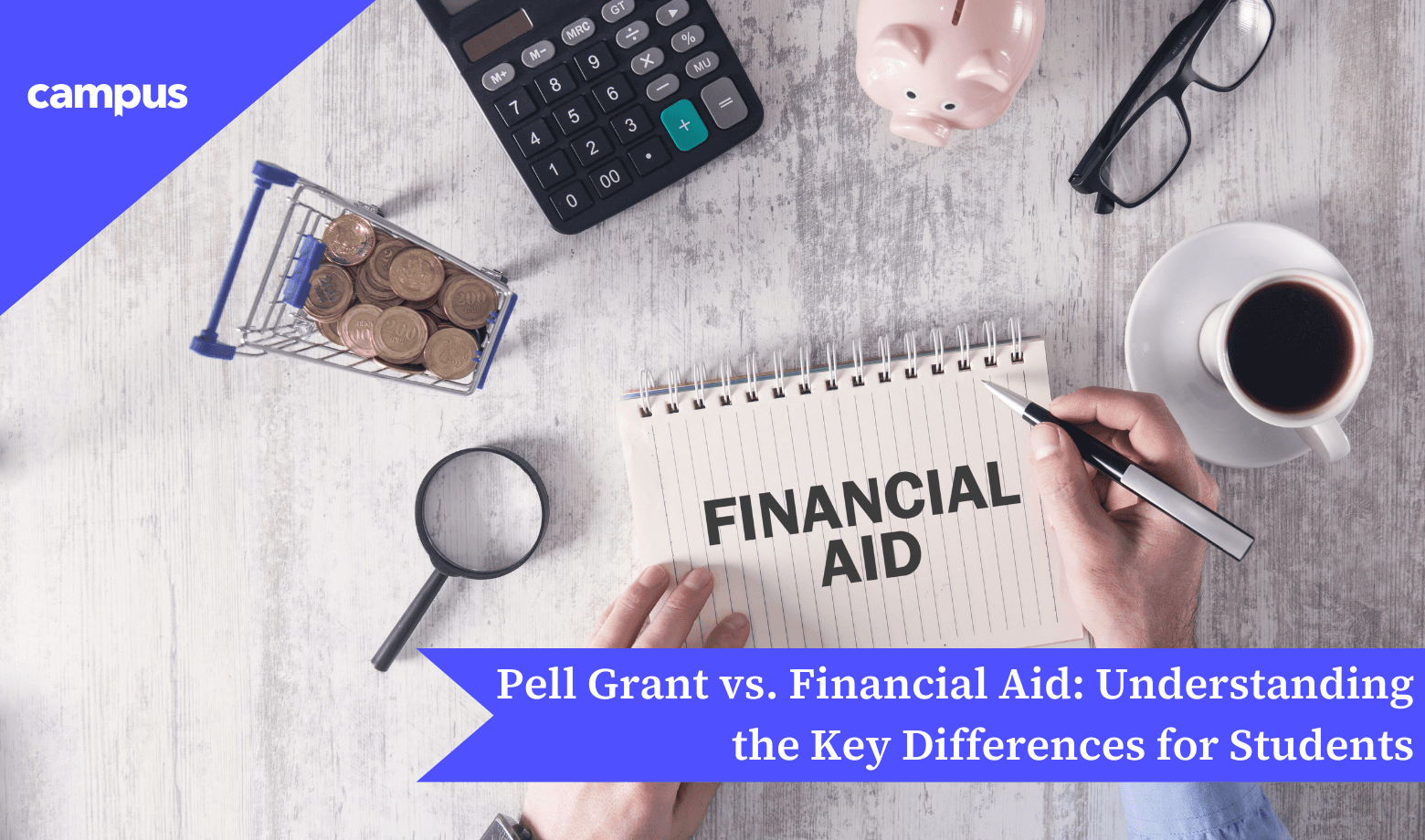If you’re considering enrolling in an online community college, or any other college or university, you’re likely wondering whether you can afford tuition.
The good news is that you may be eligible for financial aid, whether it’s a federal Pell Grant or another form of funding. In fact, more than 87% of college students in 2024 received some type of financial aid.
But before you learn how to apply for a Pell grant or other financial aid, you should understand what the terms mean. To that end, here is Pell Grant vs. financial aid: Understanding the key differences.
What is Financial Aid?
Financial aid is a catch-all term for any type of funding used for college expenses. It can come from the federal or state government, schools, or organizations.
Types of financial aid include:
- Grants. Typically, grants are based on need and generally don’t require repayment.
- Scholarships. These can be based on financial need or academic or other achievements. Scholarships don’t have to be repaid, and are often sponsored by private and nonprofit organizations, professional associations, businesses, and more.
- Loans. These are funds that students borrow to pay for tuition and expenses. Loans must be repaid with interest.
- Work-study positions. These are jobs that help undergraduate and graduate students earn money to pay for school. The federal work-study program is need-based, and students must maintain satisfactory academic progress.
Interested in enrolling at Campus?
Our admissions advisors can answer your questions.
What is a Pell Grant?
It’s the largest federal grant program that helps undergraduate students pay for college and expenses in the United States.
The Pell Grant need not be repaid, except under certain conditions. For example, you received a Teacher Education Assistance for College and Higher Education grant and didn’t finish your service obligation, or you withdrew from school before completing an enrollment period.
As for qualifications for Pell Grant, students must be a U.S. citizen or eligible noncitizen and must not hold a bachelor’s, graduate, or professional degree.
Students must also demonstrate financial need. However, the federal government will also factor in the federal poverty guidelines, your family size, and tax filing status. Each year, the U.S. government updates the maximum award amount. The amount for which you are eligible will depend on:
- Your Student Aid Index (based on your FAFSA form submission)
- The cost of attending your school and specific program
- Whether you are a full- or part-time student
- Whether you plan to attend school for a full academic year or less.
Once you have used up 12 terms of eligibility, you may no longer receive a federal Pell Grant. There is Pell lifetime eligibility, which means the amount of grant funds you receive over your lifetime is limited to the equivalent of six years of grant funding.
How to Apply for Financial Aid (Including a Pell Grant)
Whether you’re interested in receiving financial aid in general or a Pell Grant in particular, begin by filling out a Free Application for Federal Student Financial Aid (FAFSA) to determine how much financial aid you’re eligible to receive. You must submit the FAFSA each year you’re in school.
What’s the Difference a Pell Grant and Financial Aid
A federal Pell Grant is a type of financial aid that uses FAFSA to determine eligibility. By contrast, financial aid is a broad term that refers to any type of funding, including a Pell Grant, that’s meant to pay for college tuition and expenses.
Neither the FAFSA nor the Pell Grant have defined income limits for eligibility. Anyone may submit a FAFSA, their household income notwithstanding. Only students who show financial need, however, are eligible for the Pell Grant and certain other federal aid programs.
And while Pell Grants are restricted to undergrad students, graduate and undergraduate students can submit a FAFSA. In addition, unlike student loans—a type of financial aid—Pell Grants generally don’t require repayment.
In Summary
Financial aid in general, and Pell Grants in particular, can help you pay for college. However, while Pell Grants are forms of financial aid, not all financial aid means Pell grants. After all, in addition to Pell Grants, financial aid can mean scholarships, work-study, or loans.
The bottom line is that tuition is a concern for most college students. Here at Campus, we’re an online community college that offers an accredited, high-quality associate degree program.
We’re also supportive and affordable. For those who qualify, our programs are eligible for federal financial aid. And tuition is capped at the Pell Grant maximum—$7,395 for the 2024-2025 school year—so most students can attend with no out-of-pocket costs. Apply to Campus today.

